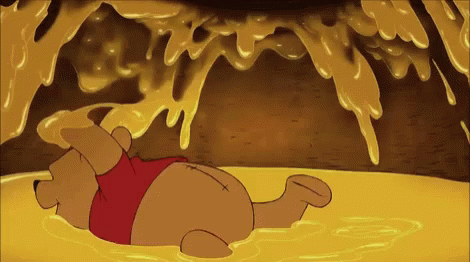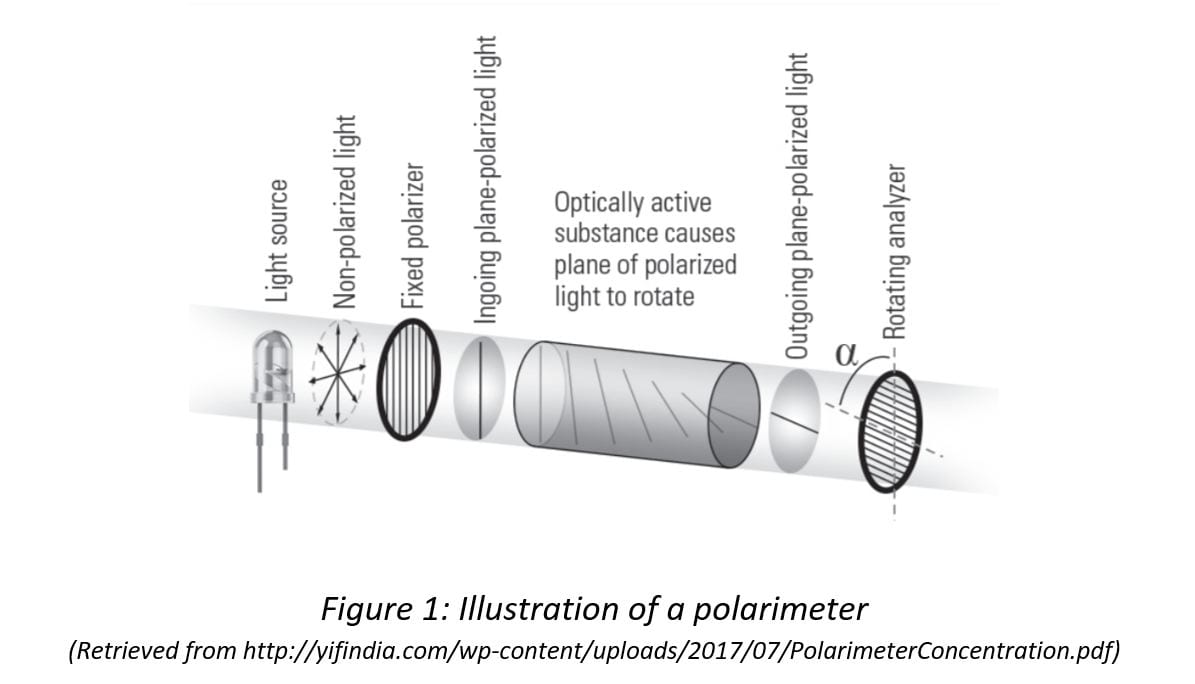As we have seen in previous blog entries, enantiomers are able to rotate plane polarised light in different directions. To recap, dextrorotatory enantiomers will rotate plane polarised light in the clockwise direction while levorotatory enantiomers will rotate plane polarised in the counter clockwise direction.
The angle of rotation can be measured using an instrument known as a polarimeter [1]. Inside the polarimeter, the angle of rotation caused by passing plane polarised light through a substance with optical activity can be measured [1]. As seen in Figure 1 below, the incoming light is first polarised, such that light of a certain orientation will enter the sample of the substance. After passing through the sample, the light will be rotated accordingly by the enantiomer. When the analysing lens is rotated by the user, the user will be able to identify the angle in which the maximum intensity of light is detected [1].
As such, through such a method, we will be able to measure the optical rotation of a particular sample. Using Biot’s law, we will be able to find out the concentration of the substance [1].
This has applications in the sugar industry as it helps in determining the purity of sugar and also helps to monitor chemical processes in the production of sugar. The specific rotation of sugars depends on the kind of sugar, and it can be either to the right (dextro-) or the left (laevo-).

Retrieved from: https://tenor.com/view/honey-pooh-gif-7290333
For example in the case of honey, the origin of the honey makes a difference in optical rotation [2]. There are two types of honey: honeydew honeys and nectar honeys. Honeydew honeys are produced by bees while nectar honeys are obtained from the nectar of plants. Honeydew honeys will rotate plane polarised light in the clockwise direction while nectar honeys will rotate plant polarised light in the anti-clockwise direction [2]. This is due to fructose and glucose/sucrose rotating light in opposite directions. As such, through this method, there can be quality control for honeys as it can be determined whether the honeydew honey has been contaminated with nectar honey and vice versa. The composition of the honeys can also be determined by using polarimeters and further ensures the quality of honey produced in the industry.
References
- Pasco. Determine Concentration through Polarimetry. 2017; Available from: http://yifindia.com/wp-content/uploads/2017/07/PolarimeterConcentration.pdf
- Determination of Honey Purity and Quality by Polarimetry. 2018; Available from: https://www.anton-paar.com/sg-en/products/applications/determination-of-honey-purity-and-quality-by-polarimetry/

